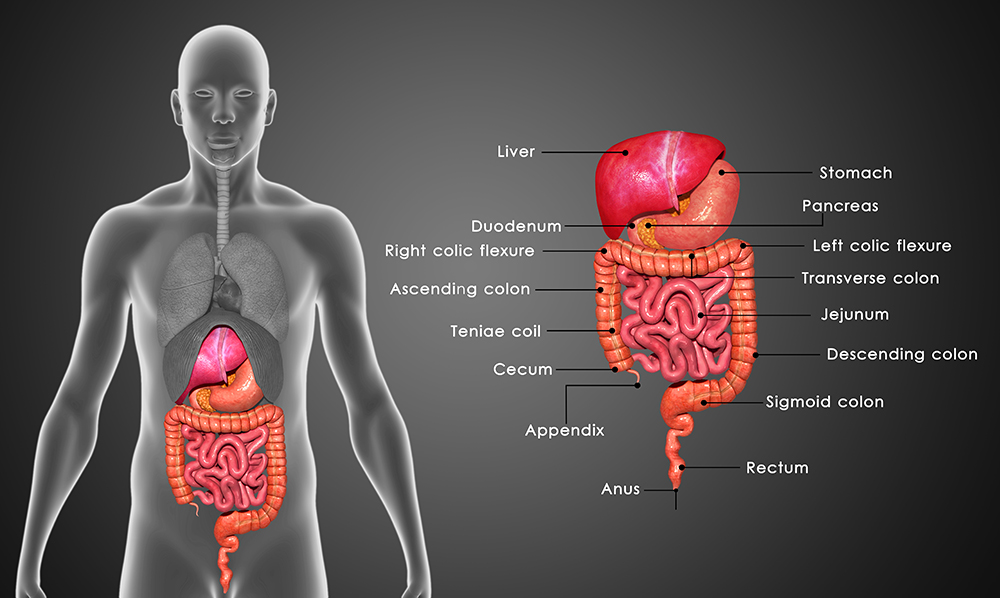
The abdomen is a large body cavity containing several organs and organ systems. When assessing a patient with a chief complaint involving the abdomen, it is imperative to know the anatomy and physiology of this region in order to best treat your patient. Identifying the location of bruising, pain, or injury can help identify which organs are potentially involved. The abdomen is divided into quadrants; upper right, upper left, lower right, and lower left. For example, organs commonly located in the upper right quadrant include the liver and gallbladder, so an injury to this area may involve damage to those organs.
Furthermore, the abdomen contains both hollow and solid organs, some of which contain acid-like substances, while others are susceptible to these substances. Lacerated or ruptured organs can spill their contents onto other organs causing intense inflammation, damage, and are often life-threatening situations. Injuries to the abdomen are also referred to as open or closed.
Closed abdominal injuries are those in which blunt force trauma or some type of impact on the body has resulted in an injury to the abdomen without breaking the skin. These types of injuries can be seen in motor vehicle accidents from the patient hitting the car steering wheel or wearing the seatbelt incorrectly, and may be identified through pain or tenderness, swelling, bruising, or abrasions to the surface of the skin. However, these injuries can be misleading since they are not easily identifiable.
In comparison, open abdominal injuries are most obvious since there is an opening to the peritoneal cavity from a foreign object entering the abdomen. Common examples include stab wounds, gunshot wounds, or any other penetrating injuries. In these circumstances, controlling blood loss would be crucial.
In situations not involving trauma, acute abdomen is usually present, where a sudden onset of abdominal pain occurs. This is often associated with severe progressive medical problems that need medical attention. If acute abdomen goes untreated, it can lead to peritonitis which can be fatal. Some common abdominal conditions that cause acute abdomen include appendicitis, ulcers, cholecystitis, and diverticulitis.

When assessing a patient with a chief abdominal complaint, you must first complete a primary assessment to identify and treat immediate or potential life threats. This will be the start of a general impression that would include age, race, sex, and overall appearance. The general impression also includes checking the patient’s responsiveness and mental status, taking patient vitals, checking airway, breathing, and circulation, which will help you evaluate and determine the extent of your treatment on scene and determine the need for ALS support.
If the patient is alert, obtain a pain assessment as it can direct you towards the area of injury, and give you a description of the current problem. Obtain a SAMPLE history and ask questions related to gastrointestinal or urological issues like nausea or vomiting, changes in bowel habits, pain, belching or flatulence, or changes in urination. Completing a good SAMPLE history will help provide the needed information for the emergency room providers to determine the cause of the abdominal complaint.
Next, you will perform a secondary assessment involving a physical examination of the abdomen. A secondary assessment can be performed at the scene or en route to the hospital. Place the patient supine and expose the abdomen by removing clothing, while still providing patient privacy. Look for any visual signs of injury including the anterior, lateral, and posterior areas of the abdomen. Gently palpate each quadrant, working in a clockwise direction, beginning with the quadrant after the one the patient indicates as the area of complaint. If the area of complaint is palpated first, the patient may guard against further examination, effecting further assessment. Note any abnormal swelling, tenderness, guarding, or rigidity while palpating and watch for both verbal and non-verbal signs of pain. Since the cause of acute abdomen can be difficult to determine and the patient’s condition can change rapidly, it is important that you reassess the patient frequently while en route to the hospital. Finally, make sure to communicate with the receiving hospital regarding your patient’s condition so that they may adequately prepare for your arrival.
- Dozens of courses and topics
- State-specific requirements
- We report to CAPCE in real time


